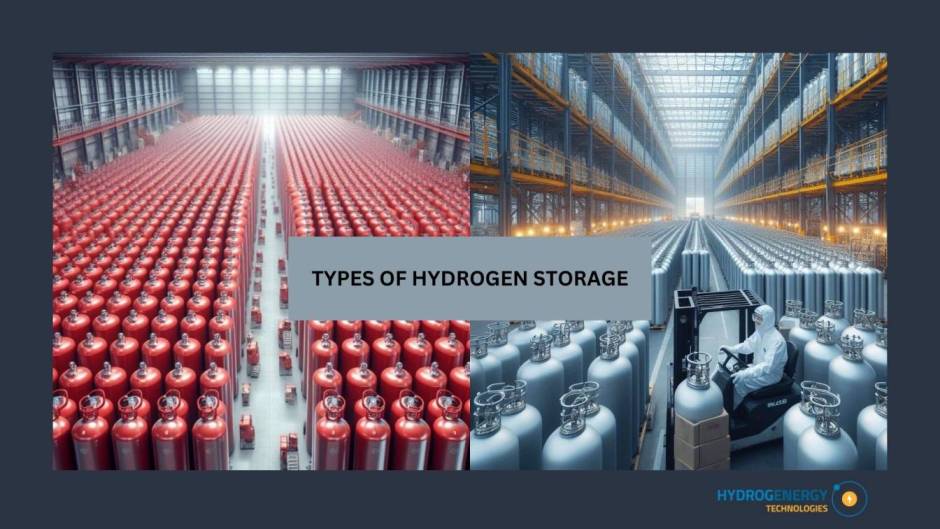Which Hydrogen Storage is Best for Me?
Hydrogen Storage | Compressed Storage | Liquid Hydrogen Storage | Solid State Storage | Metal Hydride Storage | Borohydrides
HYDROGEN STORAGE


As the hydrogen economy continues to gain momentum, one of the most critical considerations is how to store hydrogen efficiently and safely. Hydrogen storage solutions vary based on the intended application, energy density requirements, cost considerations, and safety standards. Whether you are an industry professional, a researcher, or a business looking to integrate hydrogen storage, understanding the available technologies will help determine the best solution for your needs.
Types of Hydrogen Storage Solutions
Hydrogen storage technologies can generally be categorized into three main types:
Compressed Gas Storage
Liquid Hydrogen Storage
Solid-State Hydrogen Storage
1. Compressed Gas Storage
Overview
Compressed gas storage is the most widely used hydrogen storage method today. Hydrogen gas is stored at high pressures, typically 350-700 bar, in specialized tanks made from materials like steel, aluminum, or carbon fiber composites.
Technical Details:
Hydrogen molecules are compressed using multi-stage compressors.
Storage tanks are typically Type I (metal), Type II (metal liner with composite wrap), Type III (composite with metal liner), or Type IV (full composite).
Advanced carbon fiber reinforced polymer (CFRP) tanks provide a balance of strength and weight reduction.
Leak prevention is ensured through high-integrity seals and pressure relief valves.
Pros:
Readily available and commercially proven technology.
Suitable for applications requiring fast refueling, such as fuel cell vehicles.
Scalable for small- to large-scale storage.
Cons:
Requires high-pressure containment, which can be expensive.
Energy-intensive compression process (~15% of stored hydrogen’s energy content used for compression).
Large storage volume required compared to liquid or solid-state storage.
Best for:
Hydrogen fueling stations
Industrial applications
Portable hydrogen storage solutions
2. Liquid Hydrogen Storage
Overview
Liquid hydrogen storage involves cooling hydrogen to cryogenic temperatures (-253°C) to convert it into a liquid. This significantly reduces the storage volume compared to compressed gas.
Technical Details:
Hydrogen liquefaction involves Joule-Thomson expansion and cryogenic cooling cycles.
Liquid hydrogen is stored in double-walled vacuum-insulated cryogenic tanks to minimize heat transfer.
Boil-off gases are managed using vapor recovery systems to prevent hydrogen loss.
Pros:
Higher energy density than compressed gas storage.
More efficient for long-distance hydrogen transportation.
Commonly used in space applications and large-scale hydrogen distribution networks.
Cons:
High energy consumption for liquefaction (~30-40% of the stored hydrogen’s energy content).
Requires highly insulated cryogenic tanks.
Hydrogen boil-off losses over time (~1-3% per day depending on insulation quality).
Best for:
Long-distance hydrogen transportation
Aerospace and space exploration applications
Large-scale hydrogen storage hubs
3. Solid-State Hydrogen Storage
Overview
Solid-state hydrogen storage involves materials that absorb and release hydrogen, such as metal hydrides, borohydrides, chemical hydrides, and porous materials like metal-organic frameworks (MOFs).
Technical Details:
Metal Hydrides (MH): Store hydrogen by forming reversible metal-hydrogen bonds. Examples include LaNi₅H₆ and TiFe-based alloys. Operating temperature: 20-300°C.
Borohydrides (BH): Chemical hydrides such as NaBH₄ and LiBH₄ decompose at higher temperatures (>300°C), offering higher hydrogen capacity (~10-18 wt%).
MOFs: High-surface-area materials allowing physisorption of hydrogen at cryogenic conditions.
Hydrogen desorption is controlled by heating and pressure adjustments.
Pros:
Higher volumetric energy density compared to compressed gas storage.
Can operate at lower pressures and temperatures, enhancing safety.
Suitable for stationary and mobile applications where space is a constraint.
Cons:
Higher initial material and processing costs.
Slower hydrogen uptake and release rates compared to gas and liquid storage.
Some materials may degrade over multiple cycles of hydrogen absorption/desorption.
Best for:
Stationary hydrogen storage (backup power, grid storage, etc.)
Fuel cell-powered vehicles and drones
Advanced hydrogen applications in niche markets
Factors to Consider When Choosing a Hydrogen Storage Solution
Application: What is the intended use? (e.g., transportation, grid storage, industrial applications, etc.)
Storage Duration: How long do you need to store hydrogen? Short-term applications may favor compressed gas, while long-term storage may require liquid or solid-state solutions.
Infrastructure Availability: What existing hydrogen storage infrastructure is available?
Safety Requirements: Are there stringent safety regulations that need to be met?
Cost Considerations: What is the budget for installation and operational expenses?
Energy Efficiency: How much energy will be consumed in storage and retrieval?
Conclusion
Selecting the right hydrogen storage solution depends on the specific requirements of the application. Compressed gas storage is best for quick refueling and widespread industrial use, liquid hydrogen is ideal for transportation and aerospace applications, while solid-state storage offers promising solutions for stationary and mobile hydrogen-powered systems. By evaluating factors such as cost, infrastructure, and efficiency, you can determine the most suitable hydrogen storage method for your needs.
As hydrogen technology advances, innovations in storage solutions will continue to improve, making hydrogen a more viable and sustainable energy carrier across industries.
Hydrogen Storage Comparison Table


